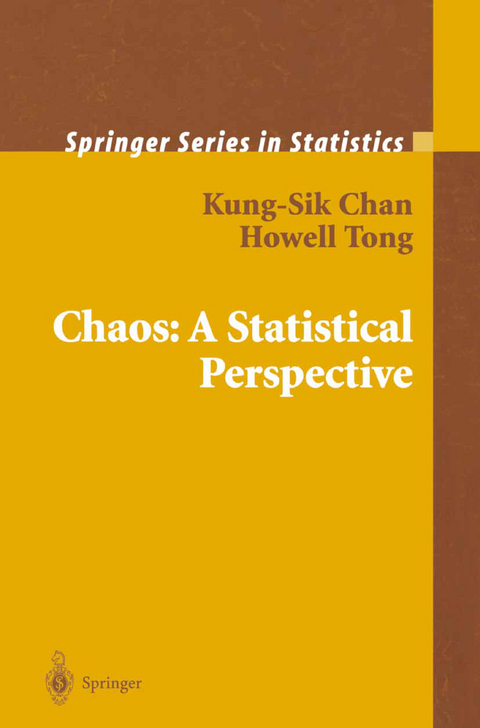
Chaos: A Statistical Perspective
Springer-Verlag New York Inc.
978-1-4419-2936-5 (ISBN)
1 Introduction and Case Studies.- 2 Deterministic Chaos.- 3 Chaos and Stochastic Systems.- 4 Statistical Analysis I.- 5 Statistical Analysis II.- 6 Nonlinear Least-Square Prediction.- 7 Miscellaneous Topics.- Appendix A Deterministic Chaos.- A.1 Introduction.- A.2 Attracting Sets.- A.3 Another Look At the Logistic Maps.- A.4 Attractors.- A.5 Two Approaches to Studying Chaos.- A.6 Invariant and Ergodic Distributions.- A.7 Lyapunov Exponents.- A.8 Natural Measures.- A.9 Dimensions of an Attractor.- A.9.1 Box-Counting Dimension.- A.9.2 Correlation Dimension.- A.10 Map Reconstruction.- A. 11 Some Elements of Differentiable Manifolds.- A.12 Hyperbolic Sets.- A.13 Notes.- Appendix B Supplements to Chapter 3.- B.1 Criteria for Ergodicity.- B.1.1 Notes.- B.2 Proofs of Two Theorems in §3.3.2.- B.3 Shadowing and Hyperbolic Attractors.- Appendix C Data Sets and Software.- References.- Author Index.
| Erscheint lt. Verlag | 23.11.2010 |
|---|---|
| Reihe/Serie | Springer Series in Statistics |
| Zusatzinfo | XVI, 300 p. |
| Verlagsort | New York, NY |
| Sprache | englisch |
| Maße | 155 x 235 mm |
| Themenwelt | Informatik ► Theorie / Studium ► Künstliche Intelligenz / Robotik |
| Mathematik / Informatik ► Mathematik ► Angewandte Mathematik | |
| Mathematik / Informatik ► Mathematik ► Statistik | |
| Mathematik / Informatik ► Mathematik ► Wahrscheinlichkeit / Kombinatorik | |
| Naturwissenschaften ► Chemie ► Physikalische Chemie | |
| Naturwissenschaften ► Physik / Astronomie ► Thermodynamik | |
| Technik | |
| ISBN-10 | 1-4419-2936-3 / 1441929363 |
| ISBN-13 | 978-1-4419-2936-5 / 9781441929365 |
| Zustand | Neuware |
| Informationen gemäß Produktsicherheitsverordnung (GPSR) | |
| Haben Sie eine Frage zum Produkt? |
aus dem Bereich


